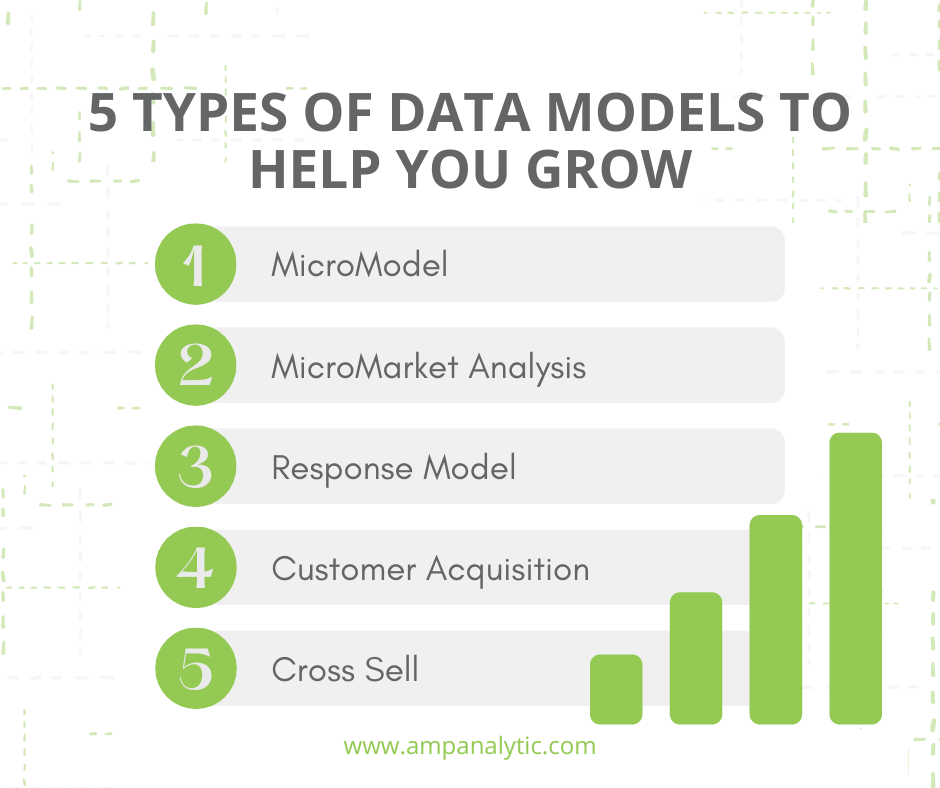
Ready to take your marketing to the next level but not sure where to start? Marketing data models offers you key insights in creating effective strategies. They come in a variety of forms, and each one is designed to look at a different aspect of your business. In order to get started, you need to establish what questions you want answered and what goals you want to achieve. Your data analysts can help you select the best model to suit your needs. Let’s take a look at 5 types of data models and how you can use them to grow your business.
MicroModeling: Customer Model
Before you pursue new customers, you need a firm grasp of who your current customers are. What’s working for your business? Which customers are the most profitable? In order to identify who your best customers are, our team custom-built a process called MicroModeling.
MicroModeling analyzes over 470 demographics, behavioral and lifestyle data points, 10 layers of geography, and 4,600 proprietary variables of your customers. All of this information is used to score, rank, and segment your customers. Each MicroModel comes with a 50+page report detailing unique characteristics about your customers. This model is highly beneficial for creating targeted marketing campaigns and customizing your marketing materials for your audience.
MicroMarket Analysis: Geography Model
If you want to grow your business, a MicroMarket analysis examines 10 layers of geography to understand what your market penetration is. This model will show you if you have saturated the market or if you have room to grow.
If you want to expand your territory and have several possibilities to open a new location, which one do you choose? We created a MicroMarket analysis that studies your current successful locations and identifies which location has the most potential for success as well as which ones are the least likely to succeed.
Response Model
Trying to figure out how successful your marketing campaign was? A response model takes the list of prospects you marketed to and matches it up with the list of customers who made transactions. This model lets you see real campaign response and your return on investment. A response model can also compare who you targeted to who made a transaction, letting you know if you are targeting the right households. If not, you can adjust your prospect list to align more with your responders.
Customer Acquisition Model
Customer acquisition models analyze historical customer data in order to identify which prospects you should go after next. The model processes your prospect universe and scores and ranks each record. Instead of targeting a random selection, you can choose the prospects most likely to make a purchase. This model enables you to maximize your marketing efforts and reduce waste.
Cross Sell Model
Do you have a new product you want to advertise? Not all of your customers will be a good fit for this product, so who do you select? A cross sell model analyzes your customer data and highlights which ones are most likely to buy the product. Each customer is given a score from 1-10 with 1 being the most likely to buy it to 10 being the least likely to buy it.
This model empowers you to make strategic decisions about who you target and how to use your marketing budget well. You can also use this model to identify which product a customer is most likely to buy next.
Wrap Up
Grow your business smarter with marketing data model insights. Whether you are trying to reach new customers, expand into new territories, or offer new products, data models give you the information you need to make the best decisions for your company.
Are you ready to get started in creating your growth strategies? Let’s connect!
